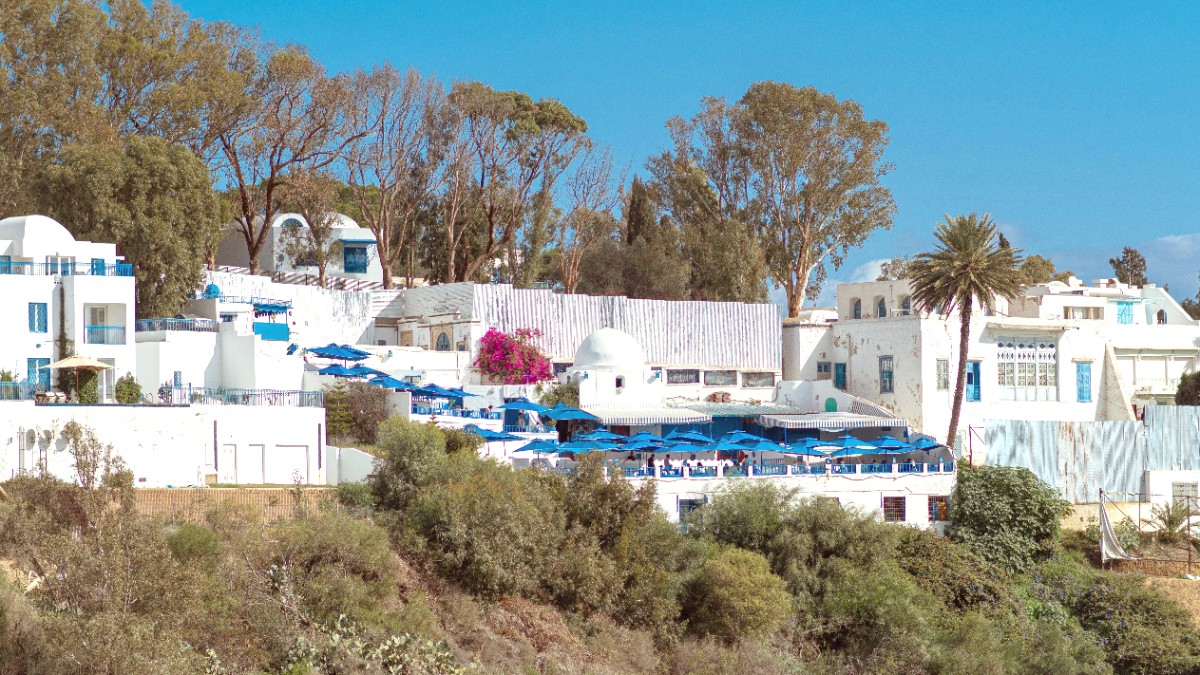
Tunisia
This park contains various sites from ancient Punic and Roman cities.
A combined ticket (12 TND, subject to change) permits access to all major sites. Purchase at your first site, like Byrsa Hill.
Visit early morning or late afternoon, especially on weekdays. Avoid tour bus arrival times, typically mid-morning.
Capture sunset over Punic Ports for dramatic lighting. Photograph blue doors and white walls of Sidi Bou Said for iconic, colorful scenes.
Visit smaller local markets in La Marsa for an authentic experience away from major tourist crowds.
Smaller towns on the Cap Bon peninsula offer local charm and beaches (Korba, Kelibia) for a different coastal experience.
Consider hiring an official guide for a full understanding of the history.
Visit early morning or late afternoon, especially on weekdays. Avoid mid-morning tour bus arrivals.
Museums provide context and artifacts that broaden knowledge of Tunisia's past.
On Byrsa Hill. Main museum for Carthage archaeological site artifacts. Punic stelae, Roman mosaics, daily life objects.
One of Africa's largest. Former beylical palace. World-class Roman mosaic collection, a global top spot. Punic, early Christian, Islamic artifacts are present.
Near Punic Ports, Carthage. Marine life focus of Mediterranean and Tunisian waters. A break from historical sites.
Former palace showing traditional Tunisian life, costumes, crafts. Insight into the country's social history is present.
Various smaller galleries in Tunis and Sidi Bou Said, showing contemporary Tunisian art, photography, and sculpture. Check local listings.
A grand theater in the city center. It hosts plays, concerts, and ballets, a taste of local and international performing arts.
Check local listings upon arrival for temporary exhibits or performances at museums and cultural centers. Many events occur during summer and festival seasons.
Various smaller galleries in Tunis and Sidi Bou Said, showing contemporary Tunisian art, photography, and sculpture.
Cultural centers in Tunis have various cultural events, including music performances, film screenings, and workshops.
One of Africa's largest museums. Housed in a former beylical palace. Renowned for its world-class collection of Roman mosaics, a global top spot.
Tunisia has more historical sites beyond Carthage.
Day trips reach them easily.
Archaeological sites and ruins extend beyond Carthage.
Historical districts and architecture.
Natural beauty also surrounds Carthage.
Beaches, lakes, and waterways. Memorial sites and monuments.
While history is prominent, natural beauty also surrounds Carthage.
Belvedere Park (Tunis): A large urban park with a zoo. Good views of the city. A place for relaxation. Andalusian Gardens (Sidi Bou Said): Small, charming gardens within the village. A peaceful escape is present.
Byrsa Hill (Carthage): Excellent views of the Gulf of Tunis, Sidi Bou Said, and the archaeological sites. Café des Délices (Sidi Bou Said): Famous cafe with panoramic sea and coastline views.
Beaches of Carthage: Several public beaches for swimming and relaxation. La Marsa Beach: A popular local beach. Gammarth Beaches: More exclusive, often private hotel beaches. Lake of Tunis: A large lagoon, a scenic backdrop.
None are significant near Carthage itself.
Not a main draw for the immediate Carthage region.
Honors American service members who died in North Africa during WWII.
Less prominent for tourism in this immediate region.
Less "emerging" but often overlooked are smaller towns on the Cap Bon peninsula.
One of the largest museums in Africa. Renowned for its world-class collection of Roman mosaics.
A UNESCO World Heritage Site. A labyrinthine old city with bustling souks.
Purchasing a combined ticket for Carthage sites is economical and convenient. Remember to hold onto it.
Most sites have signs with information, but a guide offers insights. Wear comfortable shoes, as much walking is here. Sun protection is advisable, especially during summer months.
Beyond the major collections, specialized and niche museums exist.
Art galleries and cultural centers offer a look into contemporary Tunisian creativity and performing arts.
A UNESCO World Heritage site, one of the best-preserved Roman cities in North Africa.
An ancient Punic and Roman city.
Important places of worship in the region.
Honors American service members who died in North Africa during WWII. A sobering historical perspective is here.
None are significant near Carthage. For wildlife, Friguia Park (further south) has a dedicated experience.
Not a main draw for the immediate Carthage region. More relevant in the Sahara Desert to the south.